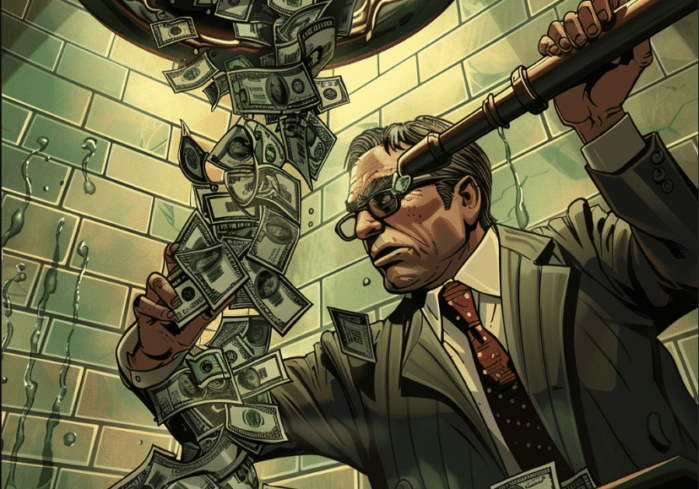With passive funds continuing to grow share at the expense of actively managed funds and markets on a roll since late 2018, analyzing individual stocks can seem like a quaint if not downright outdated exercise. Indeed, many investors and advisors have become so deeply habituated to passive investing that they don’t even consider other alternatives. As a result, the exercise of analyzing individual stocks has become a fairly lonely pursuit.
This reality, however, also spells opportunity. While the rising tide of easy monetary policy lifted most equity boats for many years, the beneficial effects now are being shared by a decreasing number of the largest stocks. In addition, as the share of active management declines, so too do analytical efforts that keep market inefficiencies in check. A key consequence is that some much more interesting stock ideas are beginning to emerge for investors who are willing and able to rummage around in less visible parts of the market.
In a sense, it shouldn’t be surprising that individual stock opportunities are creeping up. After all, there are only a relatively few stocks with the size and liquidity requisite to be constituents in a broad array of passive funds. Pretty much by definition then, most stocks do not benefit so disproportionately from large flows of funds from price-insensitive investors. It also follows that without such support, most individual stocks are still vulnerable to eroding fundamentals to a greater or lesser extent.
And eroding fundamentals there are. Weak economic growth across the globe and repeated flirtations with yield curve inversion provide plenty of fodder to beat up on stocks with economic exposure. Companies across the energy sector have been hit, but so have those in transportation, shipping, retail, and plenty of other industries.
While poor economic news (and plenty of other uncertainty) is negative for stock prospects, it does come with a bit of a silver lining. Such clear detrimental forces induce investors to react, and in doing so, they often overreact. These types of situations are the bread and butter of valuation-based stock picking.
This also relates to another point that seems nearly forgotten. It wasn’t all that long ago that investment research was dominated by company-specific work. Before the financial crisis in 2008, Wall Street research emphasized company analyses. Investment platforms such as Motley Fool and Seeking Alpha (among others) emerged to address the widespread appetite for company-specific insights. Even casual conversations often revolved around stock tips.
While much of that activity was overdone and not especially useful, the key tenets of equity analysis remain as valid as ever. With the opportunity set beginning to open up again, now is a good time to either refresh those skills or develop them anew. More specifically, the thrust of such efforts is to identify the degree to which situational factors affect a company’s cash flow stream and then to determine if the market’s reaction is excessive.

As an example, one of the stocks I have found interesting is a small-mid cap supplier to the food and beverage industry. It has been around for a long time and sells all over the world; less than half of its revenues are in the US. Because it sells to the food and beverage industry, its revenues are fairly stable. While they don’t go up a whole lot, they don’t go down a whole lot either.
This particular company is also a leader in its industry. It dominates market share and as such, it provides significant logistical and reliability advantages to its customers. On top of all this, it is also a technology leader and finds various ways to monetize its position.
The company does have debt, but the debt level is manageable given the stability of the business and its prodigious generation of cash flow.
Based upon this description of fundamentals, how would you expect the stock to have performed? By way of comparison, the S&P 500 produced a total return of 31.5% in 2019 and finished with a trailing price/earnings multiple of 21.75. Would it be up by half as much as the S&P500? Flat? Maybe down a bit?
The reality was far harsher. Not only did the stock fail to keep up with the S&P 500 last year, it crashed on the order of 50% after a negative earnings surprise. This was interesting for two reasons. First, it was left with a price/earnings multiple in the mid-single digit range which is nearly unheard of in such overvalued markets. Second, the stock fell to a level below its lows during the Great Financial Crisis over ten years ago, despite being in a far more benign economic environment. To value buyers, this starts to sound interesting.

Obviously, not all cheap stocks will outperform and there are plenty of other factors that can come into play. Further, if economic conditions continue to erode, a number of companies will be negatively affected and could run into serious trouble. This is certainly happening in the energy industry right now.
But that’s not the point. The main point here is to recognize the world of individual stocks is becoming increasingly bifurcated. On one side is the glossy veneer of index averages regularly pushing higher. These are driven be a relatively few mega cap tech names that seem to be nearly impervious to negative news.
On the other side is a growing group of stocks that are not only vulnerable but seem to be hypersensitive to such factors. This is a different environment than a few years ago when it was extremely difficult to find any stock that was cheap. Something has changed.
This opens up new challenges and opportunities for investors. A big challenge is that the mega cap tech leaders today are unlikely to remain impervious to bad news forever. One of the great lessons of the internet boom in the late 1990s is that tech companies are not immune from economic pressures.
Many will be surprised to find out this is still true. Whether it comes in the form of reduced capital spending by companies, lower discretionary spending by consumers, or lower advertising spend as corporate budgets get squeezed, technology businesses are still very much affected by economic conditions. As it turns out, these conditions affect all their customers.
Another big challenge is that with major indexes near all-time highs and with little earnings growth to support those prices, common passive strategies are set up to deliver exceptionally poor returns over the next several years. As a result, the returns from passive investing may very well be insufficient for many investors to reach their goals. The ride over the last ten years has been terrific, but the next ten will likely be very different.
There is also opportunity, however. The best chance investors will get to realize the kinds of returns that can really help them is to return to the hard work of uncovering undervalued companies. Such an endeavor is the bread and butter of active investors and focuses on identifying cash flows and determining how sustainable they might be. Competitive advantages are important and often come in the form of less tangible attributes such as an organization’s capacity to learn and adapt. It takes a lot of work, but the opportunities exist.
While the work of toiling on individual company analyses can be a lonely endeavor, especially while passive strategies remain in the spotlight, it is also a valid way to extract decent returns from an otherwise overvalued universe of options. Indeed, such efforts may be the last best hope to realize attractive returns for some time to come.
Lance Roberts is a Chief Portfolio Strategist/Economist for RIA Advisors. He is also the host of “The Lance Roberts Podcast” and Chief Editor of the “Real Investment Advice” website and author of “Real Investment Daily” blog and “Real Investment Report“. Follow Lance on Facebook, Twitter, Linked-In and YouTube
Customer Relationship Summary (Form CRS)
Also Read





















